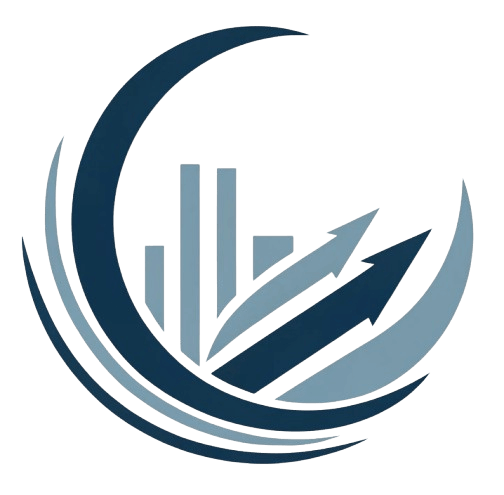Top Business Development Job Titles in 2025 – Roles and Responsibilities

Introduction
Top Business Development Job Titles in today’s global economy, the scope and influence of business development have expanded far beyond traditional deal-making. Organizations now recognize business development job titles not just as commercial roles—but as critical strategic functions that directly impact growth, innovation, and market leadership.
From early-stage startups to multinational corporations, business development professionals are embedded within leadership teams, ecosystem alliances, and national expansion plans. As demand for structured BD capability increases, so too does the need to clearly understand the different business development job titles, their respective responsibilities, and how each contributes to the value chain.
This article explores the most critical and emerging Top Business Development Job Titles across global markets in 2025. It clarifies what each role entails, the competencies expected, and the paths available for progression. Whether you are entering the field or mapping your next executive move, this guide is designed to serve as a global reference aligned with the BDA BoCK the international benchmark for BD competency.
Let’s dive into the ecosystem of business development careers and uncover the architecture of roles driving institutional success.
U.S. Bureau of Labor Statistics – Sales & Related Occupations
1. Business Development Representative (BDR) Job title
— Entry-Level Growth Architect
Core Purpose
The Business Development Representative (BDR) in Top Business Development Job Titles is the front-line architect of opportunity in the business development ecosystem. As the first point of contact between a company and its potential partners or clients, the BDR role is responsible for creating a healthy pipeline of qualified leads, generating strategic conversations, and seeding new markets.
While often classified as “entry-level,” the BDR role has evolved into a highly data-driven and insight-led position, demanding agility, empathy, and commercial awareness.
Key Responsibilities
- Lead Generation: Identify and qualify new prospects through platforms such as LinkedIn, CRM databases, and event participation.
- Outbound Communication: Initiate conversations via email, cold calling, social messaging, or video pitches—customized to each persona.
- Discovery & Qualification: Use frameworks like BANT (Budget, Authority, Need, Timeline) or SPIN to assess fit.
- CRM Management: Accurately log and update lead interactions, manage pipelines, and ensure data hygiene.
- Cross-Team Collaboration: Align closely with marketing and product teams to refine messaging and capture feedback.
Required Competencies (aligned with BDA BoCK)
| Competency Area | Example |
|---|---|
| Emotional Intelligence | Understanding rejection, adapting tone based on buyer persona. |
| Strategic Communication | Tailoring outreach language to strategic sectors or regions. |
| Market Analysis | Recognizing sector-specific trends to identify new prospect pools. |
| Relationship Mapping | Identifying influence networks within target companies. |
| Value Positioning | Articulating the business’s offer in measurable, relevant ways. |
Career Progression
A BDR role is often a launching pad into:
- Business Development Specialist
- Sales Engineer / Solutions Consultant
- Account Executive
- BD Manager (vertical/sectoral focus)
- Strategy or Product Enablement
Ambitious BDRs can progress into strategic roles within 12–24 months by showcasing measurable traction (e.g., qualified opportunity rate, velocity to conversion, feedback loop success).
Real-World Insight
“At BDA-accredited institutions, we’re seeing a shift in the BDR profile—from script-based selling to strategic engagement. The best BDRs are those who combine analytical rigor with social listening to identify not just leads, but leverage points.”
— Regional BD Director, BDA Partner in Europe
Performance Metrics to Track
- Opportunity Conversion Rate (OCR)
- Average Qualification Time
- Lead-to-Close Velocity
- Engagement Quality Score (from CRM or NPS feedback)
Recommended Article: How to Build a Business Development Strategy Step by Step
2. Business Development Specialist
— The Analytical Bridge Between Strategy and Action
Core Purpose
The Business Development Specialist operates at the intersection of strategy design and execution. Positioned above entry-level, this role focuses on translating organizational goals into actionable BD initiatives, conducting sectoral research, and supporting expansion or partnership models with precision.
Unlike the BDR who identifies leads, the Specialist analyzes markets, structures proposals, and co-pilots opportunity development alongside senior BD leaders. It is both a tactical and analytical role, requiring fluency in tools, data, and decision-making frameworks.
Key Responsibilities
- Market Intelligence Gathering: Conduct in-depth research on industries, competitors, and policy trends to identify whitespace opportunities.
- Proposal Development: Assist in writing customized partnership decks, strategic investment pitches, or cross-border entry plans.
- Partnership Support: Coordinate discovery sessions, proposal follow-ups, and stakeholder management for selected leads.
- Data Interpretation: Analyze performance reports to refine outreach tactics and improve conversion strategies.
- Process Optimization: Improve internal CRM workflows and reporting structures to support faster BD cycles.
Required Competencies (aligned with BDA BoCK)
| Competency Area | Example |
|---|---|
| Growth Strategy Design | Structuring go-to-market roadmaps for specific sectors. |
| Financial Modeling Awareness | Supporting ROI estimation or pricing analysis. |
| Innovation Insight | Identifying how to differentiate offerings in crowded markets. |
| Cross-functional Collaboration | Acting as a liaison between product, marketing, and executive teams. |
| Consultative Framing | Positioning business solutions in response to complex organizational needs. |
Career Progression
Business Development Specialists often grow into:
- Senior BD Analyst / Sector Lead
- BD Manager (Strategic Accounts)
- Innovation Partnerships Manager
- Regional Expansion Lead
- Strategy or Transformation Officer
Within BDA’s global member base, Specialists typically ascend after 1.5–3 years of high-performance engagement with diverse portfolios or sectors.
Real-World Insight
“This role is the most underestimated in BD. When done right, it becomes the engine room of institutional expansion. A good Specialist sees five steps ahead of the market—and crafts the next big bet.”
— Transformation Partner, GCC-Based Advisory Firm
Performance Metrics to Track
- Strategic Proposal Acceptance Rate
- Partner Pipeline Progression
- Market Expansion Initiatives Contributed To
- Efficiency Improvement Score (based on cycle optimization)
Recommended Article: Strategic Frameworks in Business Development: Competitive Analysis, Innovation, and Partnerships
3. Business Development Manager (BDM)
— Strategic Driver and Partnership Catalyst
Core Purpose
The Business Development Manager (BDM) in Top Business Development Job Titles is a mid- to senior-level professional responsible for driving measurable growth initiatives. They are the architects of strategic relationships, regional expansions, and institutional alliances. Their mission is not only to close deals but to shape markets.
BDMs work across functions and often report to executive leadership, aligning business development with strategic priorities, innovation agendas, and revenue goals.
Key Responsibilities
- Strategic Opportunity Identification: Spot emerging markets, government initiatives, or ecosystem shifts that represent BD potential.
- Partnership Management: Build and nurture relationships with industry associations, regulators, vendors, or high-value clients.
- Commercial Negotiations: Lead proposal discussions, pricing agreements, and contract structuring in collaboration with legal and finance teams.
- Team Enablement: Mentor junior BD professionals, oversee strategic account planning, and coordinate execution workflows.
- KPI Alignment & Reporting: Track and report BD initiatives’ impact on quarterly and annual business goals.
Required Competencies (aligned with BDA BoCK)
| Competency Area | Example |
|---|---|
| Strategic Partnerships Design | Building cross-border alliances or sectoral consortiums. |
| Governance & Policy Navigation | Engaging with ministries or regulators during BD efforts. |
| Financial Acumen | Modeling strategic pricing and impact scenarios. |
| Stakeholder Influence | Managing C-level relationships with diplomacy and vision. |
| Change Management | Leading integration of BD initiatives across departments. |
Career Progression
Typical next steps include:
- Head of Business Development
- Regional Director / Country Manager
- Corporate Strategy Advisor
- Vice President of Strategic Growth
- Institutional Partnerships Lead (e.g., for NGOs or government alliances)
BDMs are often recruited into cross-sector leadership roles, especially if they have experience in public-private collaboration or regional expansion.
Real-World Insight
“Great BDMs know how to marry corporate ambition with institutional readiness. They’re not just growth tacticians—they’re political, strategic, and visionary.”
— Director of Expansion, East Africa Regional Development Agency
Performance Metrics to Track
- New Market Entry Success Rate
- Partnership Lifetime Value (PLV)
- Strategic Initiative Completion Ratio
- Time to Revenue Activation
4. Director of Business Development
— The Institutional Growth Strategist
Core Purpose
The Director of Business Development is a senior leadership role tasked with shaping the organization’s long-term growth architecture. At this level, the focus expands from operational execution to institutional transformation. The Director integrates market intelligence, stakeholder strategy, policy trends, and internal capacity into a unified roadmap for growth.
They act as both a strategist and an executive operator bridging business development with corporate governance, innovation, and national or regional positioning.
Key Responsibilities
- Strategic Growth Planning: Define multi-year BD strategies aligned with organizational transformation or sectoral shifts.
- Executive-Level Partnerships: Lead negotiations with government bodies, multinational alliances, or impact-focused consortia.
- Team Leadership & Structuring: Build and mentor BD teams, set performance culture, and align team structure to growth priorities.
- Policy Engagement: Monitor regulatory trends and lead BD compliance strategy in highly regulated markets.
- Innovation Integration: Embed BD into product innovation cycles, ESG mandates, and digital transformation strategies.
Required Competencies (aligned with BDA BoCK)
| Competency Area | Example |
|---|---|
| Institutional Transformation | Leading BD during mergers, market repositioning, or digital shifts. |
| Public Policy Influence | Shaping sector growth through advisory roles in policy bodies. |
| Executive Communication | Reporting to board-level stakeholders and investor groups. |
| Strategic Governance | Aligning BD initiatives with risk, compliance, and audit functions. |
| Ecosystem Mapping & Influence | Identifying and mobilizing ecosystem partners to accelerate impact. |
Career Progression
Roles beyond this level include:
- Vice President, Business Development
- Chief Growth Officer
- Chief Strategy Officer
- Board Advisor for Expansion
- Managing Director (BD & Innovation)
Depending on industry and geography, Directors may also move into governmental advisory roles or lead multi-country partnerships.
Real-World Insight
“This role goes beyond growth. It’s about institutional signaling—how you shape perception, policy, and performance in new markets.”
— BDA-Certified Executive, Government-Linked Enterprise (GCC)
Performance Metrics to Track
- Institutional Impact Score (qualitative + quantitative)
- Multi-Year Revenue from BD Channels
- Stakeholder Alignment Index
- Time to Policy-Backed Expansion
5. Chief Business Development Officer (CBDO)
— The Executive Architect of Long-Term Value
Core Purpose
The Chief Business Development Officer (CBDO) is the executive responsible for steering the organization’s entire growth agenda. This role transcends short-term performance to orchestrate systemic value creation—across markets, sectors, and institutional boundaries.
The CBDO does not only lead business development; they reimagine its role as a strategic pillar of competitiveness, resilience, and influence. They operate at the intersection of boardroom vision, national priorities, ecosystem diplomacy, and institutional innovation.
Key Responsibilities
- Enterprise Growth Strategy: Design and implement long-term roadmaps that align BD with mission, risk, and capital models.
- Global Alliances and Influence: Cultivate high-level partnerships with international bodies, sovereign entities, and multinational boards.
- M&A and Market Design: Identify inorganic growth opportunities, market entry strategies, and sector repositioning plays.
- Executive Governance Role: Serve on steering committees, innovation councils, and crisis response boards.
- Organizational Transformation Leadership: Guide the integration of BD into ESG frameworks, digital futures, and resilience agendas.
Required Competencies (aligned with BDA BoCK)
| Competency Area | Executive Example |
|---|---|
| Business Development Governance | Leading enterprise-wide transformation with board oversight. |
| Stakeholder Navigation | Building influence coalitions across public-private spheres. |
| Growth Capital Strategy | Aligning BD with investment rounds, public funding, or sovereign capital. |
| Policy Intelligence & Market Shaping | Driving policy dialogue to create enabling environments for BD. |
| Executive Leadership & Visioning | Defining future market positions and institutional identity. |
Career Evolution & Strategic Placement
The CBDO often reports directly to the CEO or Board of Directors, and is sometimes positioned as:
- Chief Strategy Officer (CSO)
- Chief Growth & Innovation Officer
- Managing Director – Global Markets
- Board Member for Strategic Development
- Advisor to Government and Sectoral Bodies
Real-World Insight
“CBDOs don’t ‘sell’ growth. They design the systems that make growth inevitable. Their influence is quiet but seismic.”
— Global BD Leader, Multilateral Development Bank
Performance Metrics to Track
- Global Market Share Growth
- Portfolio Diversification Index
- Stakeholder Trust & Reputation Metrics
- Innovation-to-Revenue Ratio
- Institutional Resilience Score
Conclusion: The Business Development Career Landscape in 2025 and Beyond
Business development is no longer a siloed commercial function. It has evolved into a multi-tiered strategic discipline—embedded in the DNA of forward-looking institutions, public-private ecosystems, and national growth agendas. Each role in the BD career path—from entry-level coordinators to chief-level officers—plays a distinct and vital part in creating institutional value, market intelligence, and transformative partnerships.
The BDA BoCK™ offers a global framework to align competencies across all these levels, ensuring that every professional is equipped with the tools, mindset, and strategic fluency needed to lead growth with credibility.
World Economic Forum – Future of Work Report
Whether you’re:
- Just entering the field,
- Preparing to transition into a managerial role,
- Or shaping strategy at the C-suite level,
Understanding these roles and the competencies they require—will help you plan your trajectory and contribute meaningfully to your organization’s impact.






Published on